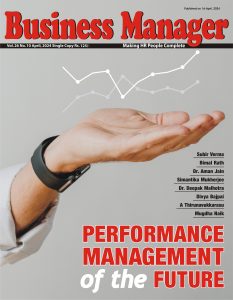1993 – Through the collective good will of colleagues, support from the profession and some significant understanding extended by the governance processes of the then MHRD the management teaching unit in IIT Delhi had been upgraded to a statutory status. Among the list of the statutory departments of IIT-D,it carried one of the briefest of names “Department of Management Studies”. This was the first ever such statutory department devoted only to management studies amongst all IITs. It was a major breakthrough in the overall design of the academic structure of IITs. It gave parity to a non-science and technology input in the making of a good engineer. This recognition of multidisciplinary competence in the making of an engineer was a significant move forward. I had a sense of satisfaction in demitting office of ‘the Head of the Department’, in IIT-D, after the Department was announced. In 1994 under growing populist pressure from a significant part of South East India the Government decided to set up a Central Government educational institution in that part of the country. The obvious choice was an IIT or an IIM. An administrative assessment of what it would take to deliver one such an institution -in the times then prevailing- provided further evidence to an already known financial framework. An IIT would be ten times costlier than an IIM.It was generally agreed between the Central Government and the State Government of Kerala that the costs will be shared in a 60:40 ratios. I was drafted to be the Chief Consultant for a detailed project report for the 5th IIM of the country. The rest is history.
It would be worthwhile recalling that the IIM tradition began with aninstitution, so named, in Kolkata. Subsequent to it being setup, within a few months’ time, Vikram Sarabhai and Kamala Choudhary, in association with ATIRA, wanted this replicated in Ahmedabad. The inspiration was to be the business school like the one in Harvard University. People such as Ravi Matthai moved over from IIM Kolkata to IIM Ahmedaad. IIM Kolkata focussed on socio-systems technical approach and IIM Ahmedabad was to be focussed on business management perse. In 1962, to go to study in IIM Ahmedabad was almost like being extended an invitation- to those who were interested- to come for management education to the IIM. At the end of two years they would get a Post Graduate Diploma in Management which would be the activity of a registered society. This would neither get the passing out candidate an admission in a University setup or any recognition in a formal academic environment. It was left to the industry and the employer to assess the competence of the candidate and offer employment if they so deemed fit. It is a tribute to the founders of this stream of education that over a period of time, the post-graduate diploma from an IIM received wide acceptability in the employment world. It was natural therefore that due equivalence with a post-graduate degree to PGDM holders of the IIM system, followed.
Several years later, it was felt that this kind of approach, pretty much left the needs of the public systems out of ambit and some modification needed to be put in place. IIM Bangalore was the outcome. Still later, marked by the huge credibility of Common Admission Test (CAT), there was more thought given to the IIM concept, by the profession. The national governance system was impressed by the results IIMs were producing. IIM Ahmedabad and IIM Kolkata did develop their own research programmes but, following the same logic they could not award formal PhDs. It was called a’Fellowship Programme’. Given its focus IIM Bangalore was slower to catch up on this and it launched its ‘Doctoral’ programme in late 90s when the writer of these lines was the Chairman of the All India Board of Management Education of AICTE.
The point being made was an IIM need not be located near an industry belt because industries alone need not be the focus of IIM education. IIM Lucknow had definite government linkages but the format of its functioning followed the conventional IIM template.
It was natural for these three IIMs to become a closed club. When some in the government raised the issue of inadequate skill formation in the management area for non-governmental organisations and others of the ilk, there was a general lack of sympathy for a fourth IIM. That it came up at all, was a major breakthrough. Without violating explicitly the concept and character of an IIM a fourth Indian Institute of Management was conceived and launched, with the focus stated above, in Lucknow. The point being made was an IIM need not be located near an industry belt because industries alone need not be the focus of IIM education. IIM Lucknow had definite government linkages but the format of its functioning followed the conventional IIM template. Most were clear: the IIM system had to be unique. It was further argued that the university system was there and they could have their own management departments.
Under these circumstances, when a fifth Indian Institute of Management in Kerala was announced it was almost like a convulsion. Earlier on under the distinguished Chairmanship of a former Director of IIM Bangalore, such an idea had been rejected and the recommendation was a Management Institution in Kerala could only be with the focus of healthcare systems. Today, when the fifth Indian Institution of Management is launching its 25th Anniversary it would bear recall to figure out how the IIM system got to Kozhikode.
The IIM system today is in many ways different to what it was in the early 60s.The neat divisions of focus of the early IIMs are perhaps known only to a few who lived through the times.
With a new IIM Act, the saga of IIMs has entered another phase of growth. How it will grow only time will tell.




























